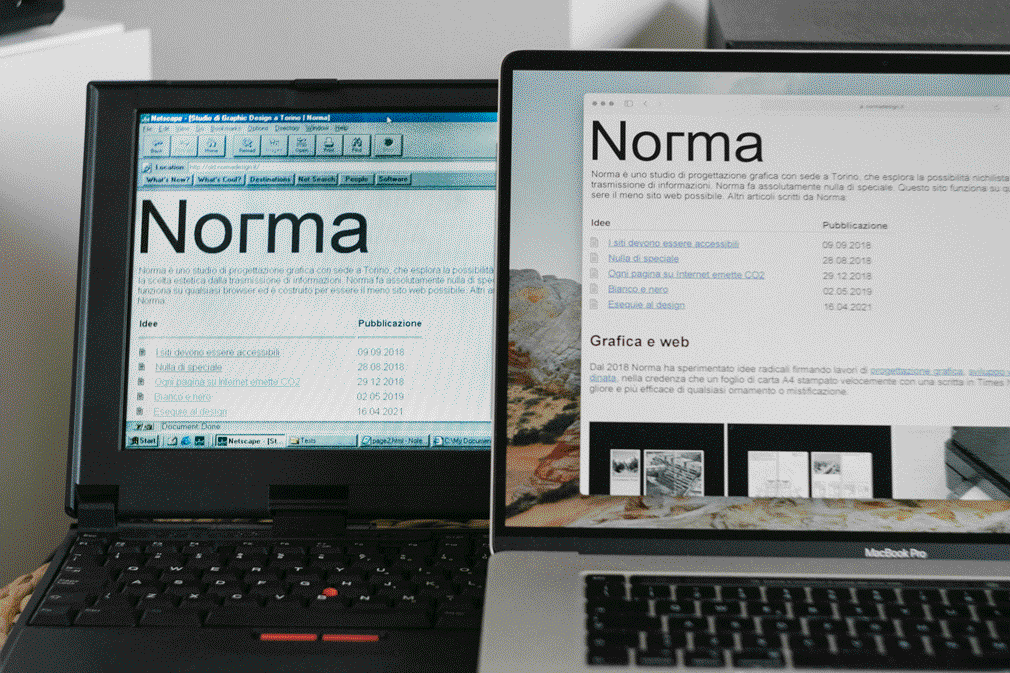A website that works on every browser
We already wrote on other occasions about the need to make websites accessible and the environmental burden that the Internet has. From the desire to experience the texts first hand, Norma's website created in the summer of 2018 was overhauled not only in its visual aspect, but above all in its technological one. Although the pages were already very light compared to the average website thanks to the dithering techniques applied to all the images, the same could not be said of the server-side generation system. A Node.js instance linked with Contentful certainly made dual language management and distribution on the now defunct dat network (which Beaker recently rebuilt with hypercore) very convenient, but it was a contradiction to the 'low tech' spirit.
In the absence of true real-time interactive functionality, or complex data to visualise, it was clear that even static html pages were more than sufficient for the purpose of conveying the information contained on this website. Therefore, eleventy.js was the perfect candidate, allowing the pre-generation via node.js of all the necessary html pages, then distributed without the use of any backend platform.

But that wasn't enough. The interesting challenge was to radically go against the trend of over-engineering products that could be much simpler. Since the syntax of HTML has not changed too much since its conception in the 1990s, is it possible to make a site accessible even from a 1996 browser? Yes, albeit with a few adjustments.
- The first problem is the introduction of new tags by HTML5 and the shift of text formatting from HTML to CSS. It would be very inconvenient to write a modern site with old standards like HTML3, not because modern browsers cannot read it, but because too many search engine optimisation opportunities would be lost. So the solution was to generate two websites, one for contemporary browsers and the other covering all the browsers released in the first 15 years of the Internet's life - thus standardising the aesthetics to that which was 'default' from the first browsers, according to the principle of avoiding graphic choice already expressed in Nothing special.
- Secondly, with all the security advantages brought by the new versions of TLS on https connections, the wide adoption of automatic redirects from http to https is identifiable as a clear will to make browsers and operating systems that are not capable of processing cryptography obsolescent. Yet, this experiment shows how it is perfectly possible to transmit the same information even through a 25-year-old browser, were it not for the artificial barrier created by the use of https. A barrier that can actually also be overcome automatically: in Norma's case, a Javascript worker is activated before the site is sent over the network. It takes care of reading the version of HTML comprehensible by each browser requesting a page, redirecting only the newer browsers to https, while providing the simplified site to the older ones.
There are many things that a 1996 Thinkpad cannot do compared to a 2022 computer, but some actions have never changed: from writing texts to surfing the Internet in search of information to read.